Dominique Luchart's Blog, page 561
July 22, 2021
Intel’s new NUC comes with 11th gen CPUs and space for a full-size graphics card, Jon Porter
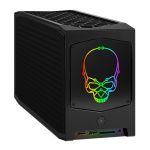
After teasing a new version of its miniature PC back at Computex 2021, Intel’s new NUC 11 Extreme is now available to preorder from SimplyNUC, with prices starting at $1,299. The machine, which is codenamed “Beast Canyon,” is listed with a three 11th gen Intel CPU options, and enough space for a 12-inch graphics card.
These three CPU options are a six-core Core i5-11400H, an eight-core Core i7-11700B, and an eight-core Core i9-11900KB. Intel has confirmed to The Verge that the new CPU options will also be available as an upgrade for owners of last year’s NUC 9 Extreme. However, it cautioned that “necessary design decisions” mean that front panel audio won’t be supported if you’re using a new CPU in the old chassis, and that PCIe Gen 4.0 is unlikely to be fully supported.
With a volume of around 8 liters, the NUC 11 Extreme is a little bigger than the 5-liter NUC 9 Extreme from last year. But Intel has put that extra capacity to good use with enough space for graphics cards up to 12-inches in length. That’s up from a maximum of eight inches in the last model.
A more powerful power supply (650W this year, up from 500W with the NUC 9 Extreme) also means the new model should be able to handle more power-intensive graphics cards. SimplyNUC specifically mentions that the computer can handle cards “with performance levels up to NVIDIA GeForce RTX 3080” via its PCIe 4.0 x16 expansion slot, and the a spec sheet says graphics cards up to 350W are supported. For reference, Nvidia’s RTX 3080 draws 320W, while the 3080 Ti draws 350W.
Beyond CPUs, SimplyNUC is selling the machines equipped with 8GB of RAM as standard, but they can be configured with up to 64GB. 256GB of NVMe M.2 storage is included in SimplyNUC’s pricing, and there are four M.2 slots in total, according to Tom’s Hardware.
In terms of connectivity, the NUC 11 Extreme has six USB 3.1 Gen 2 ports on its rear, alongside Ethernet, HDMI 2.0, and two Thunderbolt 4 ports. There’s an additional two USB 3.2 Gen 2 ports on the front as well as an SDXC card slot. Naturally you’ll gain access to more display-out ports on its rear once you plug in a discrete graphics card.
The Core i5-11400H version of the NUC 11 Extreme sold by SimplyNUC starts at $1,299, with 8GB of RAM, 256GB of storage, and integrated Intel graphics. Meanwhile, the Core i7-11700B model starts at $1,399, while the Core i9-11900KB is $1,599. The entry-level model is listed as shipping in December, but the i7 and i9 models ship earlier in September. Pricing or availability for the standalone CPUs as an upgrade for last year’s machine is yet to be announced.
The post Intel’s new NUC comes with 11th gen CPUs and space for a full-size graphics card, Jon Porter appeared first on NEWDAWN Blog.
Predictably, T-Mobile’s merger promises weren’t enough to make a carrier out of Dish, Allison Johnson
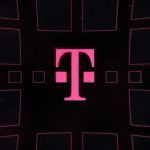
When T-Mobile acquired Sprint in April of 2020, it brought our major wireless carrier choices from four down to three. Recognizing that this would indeed be a bad thing for US wireless customers (aka all of us), T-Mobile agreed to a set of conditions with the FCC’s blessing that would theoretically position Dish Network to fill the Sprint-shaped hole in our wireless landscape.
In other words, one wireless competitor was allowed to reduce competition only if it agreed to help set up another competitor in its place. Sounds a little suspect, right? Surely a deal like that would include a lot of conditions, requirements, and oversight to make sure it would actually work.
But looking back, these were the major requirements imposed on T-Mobile to prop up Dish as a competitor:
Sell Sprint’s prepaid business, including Boost Mobile, to Dish within 120 days after the close of the merger, and maintain Boost’s competitiveness before the divestitureProvide Dish’s wireless customers with access to the T-Mobile network for at least six years through a wholesale MVNO agreement while Dish builds its own networkProvide transition services for up to three years afterward to ensure Boost customers are transferred smoothlyNot do anything anticompetitive toward Boost, like throttling or limiting access to new network technologiesSell Sprint’s 800 MHz spectrum to Dish three years after the closing of the mergerGive Dish the option to acquire old Sprint cell sites and retail stores that T-Mobile opts to decommissionProvide Dish with reasonable advance notice of network transition plans that could affect Boost customersWhat’s missing there is any definition of success. The burden for the success of the plan lay on Dish’s shoulders, not T-Mobile’s, with Dish being the one legally required to cover 70 percent of the US population with 5G by 2023 (or now possibly 2025).
Here we are roughly a year later and so far, T-Mobile appears to have technically done everything it said it would do for Dish by now. But is the scheme to prop up our fourth wireless carrier working? It sure doesn’t seem so. The fact that Dish has now fled into the arms of AT&T shows how insufficient T-Mobile’s support has been: instead of relying on the partner mandated by the $26 billion mega merger, Dish now has to spend $5 billion on a competitor to get where it wants to go. While not the final proof, it’s the latest reminder that the deal was built on a shaky premise to start with, and regulators largely took it on faith that big corporations would keep their promises.
From the beginning critics of the merger deal suggested that it depended too much on T-Mobile and Dish doing the right thing, and was so vague that it left the door open for funny business that could seriously hamper the effort to prop up Dish. The new T-Mobile wasted little time breaking its promise of being “jobs-positive from day one” and it didn’t take long after the Boost sale for it to mess with Dish, too. In October of 2020, T-Mobile told Dish it would be shutting down Sprint’s old CDMA network — which many of Dish’s Boost customers rely on — on January 1st, 2022.
T-Mobile says it went above and beyond its obligations set out in the merger deal, and that may be technically true: regulators only required six months’ notice, and the company gave 14. T-Mobile’s filings with the FCC related to the merger don’t state exactly when it anticipated shutting down the CDMA network, just that it wouldn’t do so before January 1st, 2021. But T-Mobile also publicly promised it would “ensure continued and seamless operation of Boost Mobile […] following transition to Dish’s ownership,” and yet its CDMA shutdown is on an even more aggressive timeline than rivals AT&T and Verizon.
Getting the word out to customers that they’ll need to buy a new device and acquiring enough phones for them takes time. AT&T started notifying its customers of its February 2022 3G shutdown in July of last year, and as Dish has pointed out repeatedly, Verizon has delayed closing down its CDMA network by several years to give itself enough time to migrate customers still using 3G phones. In a recent letter to the FCC, Dish also pointed to other statements T-Mobile made that led it to believe that it would have a three-year period to migrate customers off the old network. T-Mobile’s response to the partner it was supposed to prop up? It more or less says that Dish wasn’t paying close enough attention.
Giving Dish a bit more than a year’s notice of a major service upheaval for many of its new customers is, to use the technical term, bullshit. (We’re not even counting the global health crisis and the chip shortage which might have made this task harder.) And while T-Mobile may be right when it claims to have played by the rules, it certainly qualifies as funny business.
Clearly, the deal didn’t require enough from T-Mobile, and relied too heavily on then-CEO John Legere and Dish’s Charlie Ergen seeming like pretty cool guys to the judge, Victor Marrero. Putting the onus on Dish to pay up if it missed its 2025 deadline predictably did nothing to encourage T-Mobile to play nice and help Dish along. Unless Dish can pull off something incredible, it looks like we’ll be living without that fourth major wireless carrier for a long time to come.
The post Predictably, T-Mobile’s merger promises weren’t enough to make a carrier out of Dish, Allison Johnson appeared first on NEWDAWN Blog.
LG adds mic and speakers to its air-purifying mask, launching next month, James Vincent

LG has announced an updated version of its high-tech, air-purifying face mask, the terribly-named LG PuriCare Wearable Air Purifier. The company hasn’t announced pricing or widespread availability, but says the PuriCare will launch in Thailand next month “with other markets to follow once approved by local regulators.” Between the ongoing pandemic and widespread air pollution, there’s reason to think there’ll be demand for products like this.
LG first announced the mask last year, which uses replaceable air filters and built-in fans to filter the air. LG says the new version has a smaller and lighter motor, as well as built-in microphones and speakers that amplify the wearer’s voice. (Video of the original mask shows that it muffled speech quite effectively.) The latter technology, which LG is calling VoiceON, “automatically recognizes when users are talking and amplifies their voice through the built-in speaker.”
LG is not the first company to put this sort of voice-amplification tech in a face mask, with Razer’s Project Hazel mask (which is supposedly arriving in limited quantities later this year) offering a similar set-up. Razer’s mask also has LED lighting, so take that, LG.

The new LG PuriCare mask weighs 94 grams, has a built in 1,000mAh battery, and recharges in two hours via USB. LG claims it’s comfortable enough to wear for up to eight hours at a time, but in my experience no mask is truly comfortable after a few hours.
Notably, LG is not claiming the mask will protect against the novel coronavirus in any way, though it did hint that this was the case when it first announced the product. It’s true that some air purifying filters do catch particles the size of the virus that causes COVID-19, but without scientific studies on this particular product or more details about the sort of filters it uses, we can’t and shouldn’t make any claims for its efficacy in this regard. A mask is certainly better than no mask, though, and the best mask is one you’ll happily wear.
Anyway, welcome to 2021: we’re doing spec updates on face masks now.
The post LG adds mic and speakers to its air-purifying mask, launching next month, James Vincent appeared first on NEWDAWN Blog.
July 21, 2021
California sues Activision Blizzard over a culture of ‘constant sexual harassment’, Sean Hollister
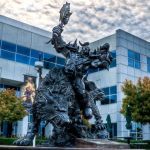
California’s Department of Fair Employment and Housing (DFEH) says that renowned game publishing studio Blizzard Entertainment, and its owner Activision Blizzard, have created a culture of “constant sexual harassment” and gender-based discrimination, in a new lawsuit filed Tuesday that claims top executives were aware and/or involved. And in the hours since the suit was revealed, numerous women have already stepped forward to corroborate the allegations.
The details are so disturbing that we’re going to start with a trigger warning right now. The idea that male employees held “cube crawls” is one of the tamer allegations in the lawsuit:
Female employees almost universally confirmed that working for Defendants was akin to working in a frat house, which invariably involved male employees drinking and subjecting female employees to sexual harassment with no repercussion. “Cube crawls” in Defendants’ offices were common and male employees proudly came into work hungover. Similarly, male employees would play video games during work, engage in banter about their sexual encounters, talk openly about female bodies, and make numerous jokes about rape.
As a product of this “frat boy” culture, women were subjected to numerous sexual comments and advances, groping and unwanted physical touching, and other forms of harassment. A female employee noted that random male employees would approach her on Defendants’ work site and comment on her breasts. Female employees working for the World of Warcraft team noted that male employees and supervisors would hit on them, make derogatory comments about rape, and otherwise engage in demeaning behavior. This behavior was known to supervisors and indeed encouraged by them, including a male supervisor openly encouraging a male subordinate to “buy” a prostitute to cure his bad mood.
Blizzard president J. Allen Brack is specifically named as being aware of and enabling this sort of behavior, and an unnamed former Blizzard CTO “was observed by employees groping inebriated female employees at company events.” World of Warcraft senior creative director Alex Afrasiabi is also specifically named:
Alex Afrasiabi, the former Senior Creative Director of World of Warcraft at Blizzard Entertainment, was permitted to engage in blatant sexual harassment with little to no repercussions. During a company event (an annual convention called Blizz Con) Afrasiabi would hit on female employees, telling him he wanted to marry them, attempting to kiss them, and putting, his arms around them. This was in plain view of other male employees, including supervisors, who had to intervene and pull him off female employees. Afrasiabi was so known to engage in harassment of females that his suite was nicknamed the “Crosby Suite” after alleged rapist Bill Crosby.
We’re assuming the DFEH meant Bill Cosby, but it’s not clear. A few even uglier things are described in the full complaint below, like how one employee committed suicide after extreme forms of sexual harassment.
All of the alleged sexual harassment is on top of allegations of discrimination, such as refusals to promote women — “the manager commented that they could not risk promoting her as she might get pregnant and like being a mom,” one allegation reads — as well as pay discrimination and outright retaliation. Employees were allegedly “discouraged from complaining as human resource personnel were known to be close to alleged harassers.”
Here is the full statement Activision Blizzard provided to The Verge and other publications, which calls the lawsuit “irresponsible behavior from unaccountable State bureaucrats that are driving many of the State’s best businesses out of California”:
We value diversity and strive to foster a workplace that offers inclusivity for everyone. There is no place in our company or industry, or any industry, for sexual misconduct or harassment of any kind. We take every allegation seriously and investigate all claims. In cases related to misconduct, action was taken to address the issue.
The DFEH includes distorted, and in many cases false, descriptions of Blizzard’s past. We have been extremely cooperative with the DFEH throughout their investigation, including providing them with extensive data and ample documentation, but they refused to inform us what issues they perceived. They were required by law to adequately investigate and to have good faith discussions with us to better understand and to resolve any claims or concerns before going to litigation, but they failed to do so. Instead, they rushed to file an inaccurate complaint, as we will demonstrate in court. We are sickened by the reprehensible conduct of the DFEH to drag into the complaint the tragic suicide of an employee whose passing has no bearing whatsoever on this case and with no regard for her grieving family. While we find this behavior to be disgraceful and unprofessional, it is unfortunately an example of how they have conducted themselves throughout the course of their investigation. It is this type of irresponsible behavior from unaccountable State bureaucrats that are driving many of the State’s best businesses out of California.
The picture the DFEH paints is not the Blizzard workplace of today. Over the past several years and continuing since the initial investigation started, we’ve made significant changes to address company culture and reflect more diversity within our leadership teams. We’ve amplified internal programs and channels for employees to report violations, including the “ASK List” with a confidential integrity hotline, and introduced an Employee Relations team dedicated to investigating employee concerns. We have strengthened our commitment to diversity, equity and inclusion and combined our Employee Networks at a global level, to provide additional support. Employees must also undergo regular anti-harassment training and have done so for many years.
We put tremendous effort in creating fair and rewarding compensation packages and policies that reflect our culture and business, and we strive to pay all employees fairly for equal or substantially similar work. We take a variety of proactive steps to ensure that pay is driven by non-discriminatory factors. For example, we reward and compensate employees based on their performance, and we conduct extensive anti-discrimination trainings including for those who are part of the compensation process.
We are confident in our ability to demonstrate our practices as an equal opportunity employer that fosters a supportive, diverse, and inclusive workplace for our people, and we are committed to continuing this effort in the years to come. It is a shame that the DFEH did not want to engage with us on what they thought they were seeing in their investigation.
Since the lawsuit was revealed, at least five former Blizzard employees have come forward on social media to corroborate details like the “cube crawl,” or that they had to deal with sexual harassment, or that they saw it happen, or that they actually appeared anonymously in the suit. We’re not embedding or linking to their posts without permission, since we’re worried they might be targeted online, too.
The California DFEH was also involved with a major sexual harassment and discrimination suit against Riot Games, which initially landed at a settlement of just $10 million before the DFEH suggested it should be $400 million or more.
Ubisoft was embroiled in a huge sexual harassment scandal last year, one whose roots may go back a decade; an October survey revealed that a full quarter of all Ubisoft employees said they’d seen or experienced sexual harassment.
The post California sues Activision Blizzard over a culture of ‘constant sexual harassment’, Sean Hollister appeared first on NEWDAWN Blog.
Jeff Bezos says his launch to space gave him greater appreciation of Earth’s fragility, ,
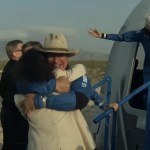
LAUNCH SITE ONE, West Texas — Seeing Earth from space apparently made a big impact on the planet’s richest resident.
Billionaire Jeff Bezos flew to suborbital space with three other people Tuesday (July 20) on the first crewed mission ever launched by his spaceflight company, Blue Origin. He said he greatly enjoyed the rocket ride and microgravity flips but was most struck, as astronauts tend to be, by the thought-provoking view.
“The most profound piece of it, for me, was looking out at the Earth, and looking at the Earth’s atmosphere,” he said during a postflight news conference Tuesday.
Related: Jeff Bezos launches into space on Blue Origin’s 1st astronaut flight
More: The top 10 views of Earth from space
That life-giving shell of air seems sizable from the ground. “But when you get up above it, what you see is it’s actually incredibly thin. It’s this tiny little fragile thing, and as we move about the planet, we’re damaging it,” Bezos said, referring to greenhouse-gas pollution. “It’s one thing to recognize that intellectually. It’s another thing to actually see with your own eyes how fragile it really is.”
Bezos has taken some steps to help protect that fragile shell and the rest of our beleaguered planet. Last year, for example, he announced the creation of the Bezos Earth Fund, which is dedicated to fighting climate change and boosting sustainability, and pledged $10 billion to get it up and running. And he now aims to start devoting more of his time to that project — time that was recently freed up after he stepped down as CEO of Amazon.
“I’m going to split my time between Blue Origin and the Bezos Earth Fund,” Bezos said during today’s news conference. “And there’s going to be a third thing, and maybe a fourth thing, but I don’t know what those are yet. I’m not very good at doing [only] one thing.”
And Blue Origin’s long-term goals have a strong environmental component, Bezos has stressed. Over the long haul, the company wants to help establish a bustling off-Earth economy, with millions of people living and working in space. Indeed, Blue Origin intends to help move most resource extraction and heavy industry off the planet, so that we don’t further strip the planet and foul its soil, air and waters.
Turning such bold dreams into reality starts with relatively small steps, Bezos said — like today’s first-ever crewed launch of New Shepard, the company’s suborbital space tourism vehicle.
[image error]
Wally Funk, Mark Bezos and Oliver Daemen enjoying themselves during the microgravity phase of Blue Origin’s first crewed flight. (Image credit: Blue Origin)“We’re going to build a road to space so that our kids and their kids can build the future. And we need to do that. We need to do that to solve the problems here on Earth. It’s not about escaping,” Bezos said.
“This is the only good planet in the solar system,” he said. “We’ve sent robotic probes to all of them. This is the only good one, I promise you. So we have to take care of it. And when you go into space and see how fragile it is, you want to take care of it even more. And that’s what this is about.”
Mike Wall is the author of “ Out There ” (Grand Central Publishing, 2018; illustrated by Karl Tate), a book about the search for alien life. Follow him on Twitter @michaeldwall. Follow us on Twitter @Spacedotcom or Facebook.
The post Jeff Bezos says his launch to space gave him greater appreciation of Earth’s fragility, , appeared first on NEWDAWN Blog.
NASA’s Perseverance rover is ready to hunt signs of life on Mars. See the 1st science results today., ,
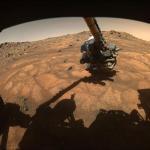
Even as NASA’s Mars helicopter Ingenuity has captured the imagination with flight after flight on the Red Planet, the chopper’s rover companion has been hard at work doing science, and NASA is ready to share the results.
The Perseverance rover is a robotic geologist and astrobiologist designed to help scientists look for traces of ancient life at the Red Planet’s Jezero Crater, which likely held a large lake billions of years ago. Since landing in February, the rover has been testing technology and instruments and getting its bearings on the crater floor.
Now, NASA is ready to share the first update about Perseverance’s science work in a news conference that you can watch here at 1 p.m. EDT (1700 GMT) on NASA TV and Space.com. The news conference will include a host of NASA personnel, including the associate administrator for science, Perseverance’s project manager and project scientist, and members of the teams planning the rover’s movements and science investigations, according to an agency statement.
In a separate statement, rover engineers said Perseverance is ready to begin hunting for signs of ancient life on Mars. The rover has tested out many of the instruments it will use to investigate rocks around Jezero crater for signs of ancient life.
Among those instruments are those on Perseverance’s 7-foot (2 meters) robotic arm, which includes an X-ray geology tool that has been performing particularly well so far, according to a NASA release.
[image error]
Analysis of a single rock conducted by the Perseverance rover’s PIXL instrument. (Image credit: NASA/JPL-Caltech)“We got our best-ever composition analysis of Martian dust before it even looked at rock,” Abigail Allwood, a geologist at NASA’s Jet Propulsion Laboratory (JPL) in California said of the instrument for which she serves as principal investigator, called Planetary Instrument for X-ray Lithochemistry or PIXL.
All of the tools on the rover’s arm are designed to reveal the closest look yet at the rocks and dust of Jezero crater, a crater that was once a vast lake that has long since dried out.
“If life was there in Jezero Crater, the evidence of that life could be there,” Allwood added.
[image error]
A close-up view of a rock target dubbed “Foux” that the Perseverance rover took with its WATSON camera on July 11, 2021. (Image credit: NASA/JPL-Caltech/MSSS)Another instrument, called Wide Angle Topographic Sensor for Operations and Engineering or WATSON, has also provided particularly valuable early results, according to the statement. WATSON specializes in capturing up-close photographs of rocks that help scientists understand how the samples formed based on factors like color, grain size and texture.
In addition to its own examinations, the Perseverance rover will also be responsible for gathering and storing rock samples that a future mission will carry to Earth for examination in much more sophisticated labs than can ever be sent to Mars.
Email Meghan Bartels at mbartels@space.com or follow her on Twitter @meghanbartels. Follow us on Twitter @Spacedotcom and on Facebook.
Join our Space Forums to keep talking space on the latest missions, night sky and more! And if you have a news tip, correction or comment, let us know at: community@space.com.
The post NASA’s Perseverance rover is ready to hunt signs of life on Mars. See the 1st science results today., , appeared first on NEWDAWN Blog.
Our universe might be a giant three-dimensional donut, really., ,

Imagine a universe where you could point a spaceship in one direction and eventually return to where you started. If our universe were a finite donut, then such movements would be possible and physicists could potentially measure its size.
“We could say: Now we know the size of the universe,” astrophysicist Thomas Buchert, of the University of Lyon, Astrophysical Research Center in France, told Live Science in an email.
Related: 10 wild theories about the universe
Examining light from the very early universe, Buchert and a team of astrophysicists have deduced that our cosmos may be multiply connected, meaning that space is closed in on itself in all three dimensions like a three-dimensional donut. Such a universe would be finite, and according to their results, our entire cosmos might only be about three to four times larger than the limits of the observable universe, about 45 billion light-years away.
A tasty problemPhysicists use the language of Einstein’s general relativity to explain the universe. That language connects the contents of spacetime to the bending and warping of spacetime, which then tells those contents how to interact. This is how we experience the force of gravity. In a cosmological context, that language connects the contents of the entire universe — dark matter, dark energy, regular matter, radiation and all the rest — to its overall geometric shape. For decades, astronomers had debated the nature of that shape: whether our universe is “flat” (meaning that imaginary parallel lines would stay parallel forever), “closed” (parallel lines would eventually intersect) or “open” (those lines would diverge).
Related: 8 ways you can see Einstein’s theory of relativity in real life
That geometry of the universe dictates its fate. Flat and open universes would continue to expand forever, while a closed universe would eventually collapse in on itself.
Multiple observations, especially from the cosmic microwave background (the flash of light released when our universe was only 380,000 years old), have firmly established that we live in a flat universe. Parallel lines stay parallel and our universe will just keep on expanding.
But there’s more to shape than geometry. There’s also topology, which is how shapes can change while maintaining the same geometric rules.
For example, take a flat piece of paper. It’s obviously flat — parallel lines stay parallel. Now, take two edges of that paper and roll it up into a cylinder. Those parallel lines are still parallel: Cylinders are geometrically flat. Now, take the opposite ends of the cylindrical paper and connect those. That makes the shape of a donut, which is also geometrically flat.
While our measurements of the contents and shape of the universe tell us its geometry — it’s flat — they don’t tell us about the topology. They don’t tell us if our universe is multiply-connected, which means that one or more of the dimensions of our cosmos connect back with each other.
Look to the lightWhile a perfectly flat universe would extend out to infinity, a flat universe with a multiply-connected topology would have finite size. If we could somehow determine whether one or more dimensions are wrapped in on themselves, then we would know that the universe is finite in that dimension. We could then use those observations to measure the total volume of the universe.
But how would a multiply-connected universe reveal itself?
A team of astrophysicists from Ulm University in Germany and the University of Lyon in France looked to the cosmic microwave background (CMB). When the CMB was released, our universe was a million times smaller than it is today, and so if our universe is indeed multiply connected, then it was much more likely to wrap in on itself within the observable limits of the cosmos back then. Today, due to the expansion of the universe, it’s much more likely that the wrapping occurs at a scale beyond the observable limits, and so the wrapping would be much harder to detect. Observations of the CMB give us our best chance to see the imprints of a multiply connected universe.
Related: 5 reasons we may live in a multiverse
The team specifically looked at the perturbations — the fancy physics term for bumps and wiggles — in the temperature of the CMB. If one or more dimensions in our universe were to connect back with themselves, the perturbations couldn’t be larger than the distance around those loops. They simply wouldn’t fit.
As Buchert explained to Live Science in an email, “In an infinite space, the perturbations in the temperature of the CMB radiation exist on all scales. If, however, space is finite, then there are those wavelengths missing that are larger than the size of the space.”
In other words: There would be a maximum size to the perturbations, which could reveal the topology of the universe.
Making the connection[image error]
This image from the Planck satellite reveals the cosmic microwave background, the oldest light in our cosmos. This CMB image shows temperature fluctuations that correspond to regions of slightly different density. (Image credit: ESA/Planck Collaboration)Maps of the CMB made with satellites like NASA’s WMAP and and the ESA’s Planck have already seen an intriguing amount of missing perturbations at large scales. Buchert and his collaborators examined whether those missing perturbations could be due to a multiply-connected universe. To do that, the team performed many computer simulations of what the CMB would look like if the universe were a three-torus, which is the mathematical name for a giant three-dimensional donut, where our cosmos is connected to itself in all three dimensions.
“We therefore have to do simulations in a given topology and compare with what is observed,” explained Buchert. “The properties of the observed fluctuations of the CMB then show a ‘missing power’ on scales beyond the size of the universe.” A missing power means that the fluctuations in the CMB are not present at those scales. That would imply that our universe is multiply-connected, and finite, at that size scale.
RELATED CONTENT
—11 fascinating facts about our Milky Way galaxy
—5 reasons we may live in a multiverse
—The 18 biggest unsolved mysteries in physics
“We find a much better match to the observed fluctuations, compared with the standard cosmological model which is thought to be infinite,” he added.
“We can vary the size of the space and repeat this analysis. The outcome is an optimal size of the universe that best matches the CMB observations. The answer of our paper is clearly that the finite universe matches the observations better than the infinite model. We could say: Now we know the size of the universe.”
The team found that a multiply-connected universe about three to four times larger than our observable bubble best matched the CMB data. While this result technically means that you could travel in one direction and end up back where you started, you wouldn’t be able to actually accomplish that in reality. We live in an expanding universe, and at large scales the universe is expanding at a rate that is faster than the speed of light, so you could never catch up and complete the loop.
Buchert emphasized that the results are still preliminary. Instrument effects could also explain the missing fluctuations on large scales.
Still, it’s fun to imagine living on the surface of a giant donut.
Originally published on Live Science.
The post Our universe might be a giant three-dimensional donut, really., , appeared first on NEWDAWN Blog.
Ford’s self-driving cars will be available on Lyft’s platform in Miami and Austin, Andrew J. Hawkins

Lyft customers in Miami will be able hail a robotaxi from Argo AI, an AV startup backed by Ford and Volkswagen, by the end of the year, the companies announced Wednesday. Next year, riders in Austin, Texas, will be able to do the same. It’s the latest move to make more autonomous vehicles available for public use after initial predictions about the wide-scale availability of AVs failed to materialize.
For years, Ford promised that it would launch a full-scale autonomous vehicle business, including robotaxis and driverless delivery, by 2021. That later got pushed to 2022, with the automaker citing delays due to the coronavirus pandemic. It also said it would use a purpose-built autonomous vehicle without steering wheel or pedals to power its commercial ambitions, which it has yet to reveal.
The deal with Lyft is the first sign that Ford is still trying to make good on its initial promises. It will be the first time that Ford or Argo have invited members of the general public to go for a ride in their autonomous vehicles.
The fleet size will be “modest” at first, with “less than 100 vehicles” collectively across both cities by next year, an Argo spokesperson said. But the company says it is “laying the groundwork” for the deployment of 1,000 autonomous vehicles across multiple markets over the next five years.
By the end of the year, Argo’s autonomous vehicles will be available on the Lyft platform in Miami, where Argo has been testing its technology for the last several years. If Lyft customers are within a defined geographic area, they will be offered the choice to ride in an autonomous vehicle to their destination. Those vehicles will still include two safety drivers in the driver and front passenger seats.
The announcement also signals that despite selling its self-driving business to Toyota earlier this year, Lyft is still interested in keeping a toehold in the AV industry. The ride-hailing company already brokers trips in self-driving cars in Las Vegas with Aptiv, and in Phoenix with Waymo.
But the company won’t have a hand in the development of the technology, after off-loading its Level 5 autonomous vehicle research division to the Toyota-owned Woven Planet Holdings for $550 million last April. The company followed its rival Uber in selling off its costly autonomous vehicle division in a bid to excise the money-losing portions of its business. Last year, Uber sold its AV project to Aurora, a startup founded by the former head of Google’s self-driving project.
But Lyft isn’t just a passive player in this deal. The companies have signed a “network access agreement” that will give Lyft a 2.5 percent equity stake in Argo in exchange for the ride-hailing company’s data on the self-driving trips. Ford, Argo, and Lyft say they will use the data generated from Miami and Austin to figure out how to grow a full-scale robotaxi business. According to the press release:
Argo will use anonymized service and fleet data from Lyft that will enable Argo to overcome the challenges faced by other autonomous vehicle companies by focusing on where they can build a sustainable business and can validate deployment through localized safety data.
That could turn out pretty lucrative for Lyft, if Argo follows through on its plans to go public at a value of $7 billion. According to Bloomberg, the startup could go the traditional initial public offering route, or it could attempt a reverse merger with a special acquisition company, or SPAC. Ford invested $1 billion in Argo in 2017 and VW made its own investment of $2.6 billion last year.
Argo, which has been testing its fourth-generation vehicles in Miami, Austin, and Washington, DC, for the last few years, as well as Pittsburgh, Detroit, and California. The company is also preparing to launch an autonomous micro-transit and delivery service with VW in Germany, using its fifth generation autonomous technology, starting in 2025.
The post Ford’s self-driving cars will be available on Lyft’s platform in Miami and Austin, Andrew J. Hawkins appeared first on NEWDAWN Blog.
Aviation pioneer Wally Funk, the oldest person to fly in space, can’t wait to go back after Blue Origin launch, ,
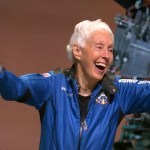
After a six-decade wait to launch off the Earth, new space traveler Wally Funk is ecstatic.
The 82-year-old aviation pioneer (and now the oldest person ever to fly in space) launched on a suborbital flight Tuesday (July 20) aboard New Shepard, a private rocket built by Blue Origin and financed by billionaire Jeff Bezos, who was also on the flight. The trip, Funk said, was “incredible.”
Funk – who attempted unsuccessfully to join NASA’s astronaut corps four times and was part of the Mercury 13 group of female aviators who took astronaut tests — finally flew on New Shepard’s debut crewed spaceflight for free at the invitation of billionaire founder Jeff Bezos. Also joining her was Bezos’ venture capitalist brother Mark, and paying passenger and physics student Oliver Daemen.
Related: Jeff Bezos launches into space on Blue Origin’s 1st astronaut flight
[image error]
Mercury 13 aviation pioneer Wally Funk, 82, waves to a crowd after launching on Blue Origin’s first crewed flight of the suborbital New Shepard rocket and capsule from Launch Site One near Van Horn, Texas on July 20, 2021. (Image credit: Blue Origin)“I’ve been waiting a long time to finally get up there,” Funk said during a livestreamed postflight briefing Tuesday from Blue Origin’s Launch Site One near Van Horn, Texas.
“I’ve done a lot of astronaut training through the world — Russia, America,” she continued. “I could always beat the guys on what they were doing, because I was always stronger. I’ve always done everything on my own.”
Bezos has said repeatedly in interviews that Funk always outshone the three men on her crewmates, who are between ages 18 and 57. Funk’s enthusiasm was apparent, as she bounded first up the stairs at the launch tower, waving at the camera. Upon emerging from the capsule after landing, the octogenarian — who has 19,600 pilot hours under her belt — extended both arms wide, grinning.
Waiting at the landing site was a flight student of Funk’s, Mary — whose last name was not disclosed. Mary was one of at least 3,000 people that the octogenarian taught over the decades, Funk said. “I don’t know if they’re going to get to see this or not,” Funk said of her former students, “but I felt so charged. I was just a normal person going up into space.”
Funk and the rest of her crewmates were rookie astronauts, although Funk’s thousands of hours of instructional and pilot experience would likely have seen her face some in-flight “anomalies” that could have helped in case of emergency.
While the New Shepard flight was nominal, it appears Funk’s decades of time in the cockpit made an impression on at least one of her crewmates.
“Wally was never nervous,” Jeff Bezos said, but the former Amazon CEO joked that Funk became impatient when a six-minute launch hold happened on the pad for so-far undisclosed reasons. “Wally was like, ‘Are we going to go, or not? What the hell; we’re burning daylight. Let’s go.'”
Related: ‘Woohoo!’ Jeff Bezos and Blue Origin’s first passengers revel in their launch to space
[image error]
Wally Funk receives astronaut wings from Blue Origin’s Jeff Ashby, a former Space Shuttle commander, after her flight on Blue Origin’s New Shepard into space on July 20, 2021 near Van Horn, Texas. (Image credit: Joe Raedle/Getty Images)Funk attempted to join the NASA program during an era when the agency drew all its astronauts from the American military corps, which itself excluded women until the 1970s. It wasn’t until 1978 that NASA selected women astronauts. Among the new female recruits, Sally Ride was the first American woman in space in 1983 – 22 years after the first American man, Al Shepard, after whom the New Shepard system is named. Funk was 44 years old in 1983, compared to Ride’s 32.
The long wait gave a historical perk to Funk, however, as she became the oldest person to reach space Tuesday during the New Shepard flight. She surpassed the 1998 record set by then 77-year-old Mercury astronaut John Glenn on space shuttle flight STS-95.
Related: Blue Origin’s launch with Jeff Bezos: Everything you need to know
Launch and landing tend to be the parts of a space mission in which astronauts experience multiple “G-forces”, or acceleration a few times that of Earth’s normal gravity. But Funk said she barely felt a thing.
“It was so easy, it was just incredible [and] I didn’t feel that,” Funk said of the landing, during which the capsule descended to Earth under three parachutes. She added that the flight was an experience she will always cherish, thanks to the view and her crewmates.
“I want to go again,” she said as Blue Origin’s audience cheered. “Fast.”
Follow Elizabeth Howell on Twitter @howellspace. Follow us on Twitter @Spacedotcom and on Facebook.
The post Aviation pioneer Wally Funk, the oldest person to fly in space, can’t wait to go back after Blue Origin launch, , appeared first on NEWDAWN Blog.
Google Maps will help you avoid crowded mass transit in way more cities, Jon Porter

Google is expanding the number of cities where Maps offers information about public transport crowding. The number of cities covered is increasing from around 200 today, to “over 10,000 transit agencies in 100 countries,” the company says. As well as crowdedness, Google says Maps is also being updated to offer more information about past travel.
Google Maps’ crowdedness information originally launched pre-pandemic in 2019, but over the past year social distancing has made it more important than ever. Crowdedness information is generated from a mixture of historical location data, as well as self-reporting from Maps users on individual trains. Google says it anonymizes the location history data used.
 Google is testing giving information on the crowdedness levels of individual carriages.Image: Google
Google is testing giving information on the crowdedness levels of individual carriages.Image: GoogleAs well as expanding the crowdedness predictions to more cities, Google is also making them more granular in New York and Sydney. In these cities users will see how crowded individual train carriages are instead of just general crowding on the transit line. The feature works using data provided by transit agencies themselves, and Google says it plans to expand the capability to more cities soon.
[image error]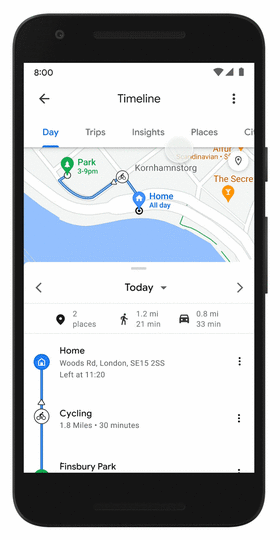 A new timeline feature shows details about past journeys.Image: Google
A new timeline feature shows details about past journeys.Image: GoogleGoogle is also adding a couple of new features to Maps’ Timeline section on Android, which is accessible by tapping your profile image and then selecting “Your Timeline.” A new “Insights” tab shows trends about the amount of time and distance you’ve spent using different transport methods and the places you’ve visited. There’s also a “Trips” tab that gathers together places visited, including the option to export them as a list if you want to pass them on as travel recommendations.
Alternatively, if you don’t like the reminder of how much data Google Maps is capable of collecting about you over time, you can turn this off (and lose access to the new Timeline features) by disabling Location History on your phone.
Finally, Google is also offering more review options for restaurants in the US, with new prompts to share information about meal pricing and whether you got takeout and delivery. The new review options are available on both iOS and Android, and Google says they’ll eventually be available for businesses beyond restaurants.
The post Google Maps will help you avoid crowded mass transit in way more cities, Jon Porter appeared first on NEWDAWN Blog.



